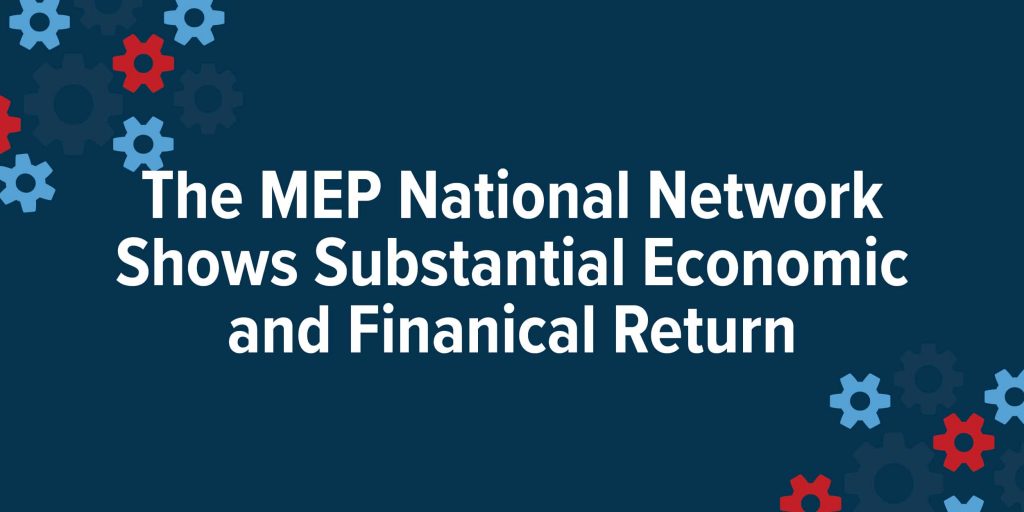A recent study by Summit Consulting and the W.E. Upjohn Institute found the National Institute of Standards and Technology’s (NIST) Manufacturing Extension Partnership (MEP) Program generated a substantial economic return of $13.40 for every dollar invested in fiscal year (FY) 2019 by the federal government.
MEP is a public-private partnership that delivers comprehensive, proven solutions to U.S. manufacturers, fueling growth and advancing U.S. manufacturing. The MEP Program is managed by NIST, part of the U.S. Department of Commerce, and implemented through a network of Centers, known as the MEP National Network™, located in every state and Puerto Rico. Each MEP Center is a partnership between the federal government and a variety of public or private entities, including state, university and nonprofit organizations that employ a network of more than 1,400 industry experts who work directly with manufacturers in the field to improve productivity and enhance competitiveness.
Each year, an independent firm, Fors Marsh, surveys manufacturers regarding the impact achieved as a result of MEP Center services. Using the national REMI® model, along with the results from the FY 2019 NIST MEP client impact survey conducted by Fors Marsh, a study by Summit Consulting and the W.E. Upjohn Institute found that the economic returns were positive and robust.
The Summit Consulting and Upjohn study found that more jobs were generated by the MEP Program than directly reported by its clients. Over 217,000 additional jobs existed in the U.S. because of MEP Center projects last year than would have existed without the Program. This includes direct, indirect and induced jobs (jobs that are a result of direct/indirect employee’s spending money in the community) generated by MEP Center projects – jobs that support additional manufacturing jobs critical to U.S. supply chains and jobs outside of manufacturing.
Finally, the study examined additional areas of economic impact beyond those captured in the client survey. Personal income was $14 billion higher and gross domestic product was $22.9 billion larger, translating to an increase of $1.87 billion in personal income tax revenue to the federal government than without the Program. The study looked solely at personal income tax and not business taxes, so it provides a conservative estimate of the return on investment.
To view the complete study, please visit: https://research.upjohn.org/reports/244/
The MEP National Network Shows Substantial Economic and Financial Return
Page Views: 525

